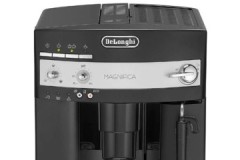A step-by-step guide on how to descale a washing machine with citric acid
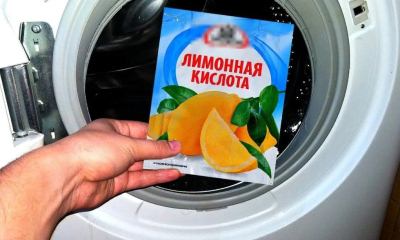 Scale formation in the washing machine is a common problem that can be solved using special products, or by using folk methods.
Scale formation in the washing machine is a common problem that can be solved using special products, or by using folk methods.
One popular option is citric acid exposure. This is not a difficult method, which, nevertheless, requires certain knowledge and strict adherence to all conditions.
How to descale a washing machine using citric acid is described in the article.
Content
Can you clean it?
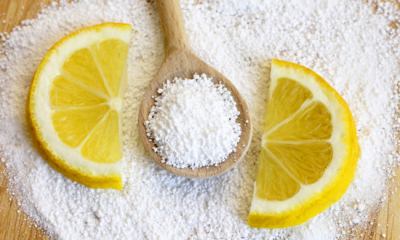 During operation, the washing machine is exposed to detergents and tap water that is not always of the correct quality.
During operation, the washing machine is exposed to detergents and tap water that is not always of the correct quality.
Contaminants washed out of things can also be deposited on the elements of the machine, and high humidity in the drum can lead to the formation of mold on the sealing rubber.
Hard water contains high amounts of magnesium and calcium salts... During the washing process, heating occurs, converting these compounds into carbon dioxide and sediment, which, combining with rust particles and other substances, settles on the tank and heating elements in the form of scale.
Cleaning with citric acid is an important and necessary component of equipment maintenance, which must be carried out regularly.
Citric acid is an acid-containing food product that can react with limescale deposits that form scale. The maximum cleaning effect carried out with its use is achieved at high temperature indicators.
Advantages and disadvantages of the method
Cleaning the unit with citric acid has its positive and negative points, which should be known in advance.
The advantages include:
 effective cleaning of the drum and heating element from scale as a result of a chemical reaction;
effective cleaning of the drum and heating element from scale as a result of a chemical reaction;- disinfection;
- health safety;
- lack of harmful impurities;
- the product does not have a pronounced odor;
- low cost of preventive cleaning;
- buying citric acid in a store is not a problem;
- mold prevention.
Minuses:
- aggressive action of acid on rubber elements - seals;
- a specific odor may be present;
- acid can damage the elements of the heating element;
- salts that peel off from the heating elements can block the drain.
Determining the amount of product
The required amount of citric acid is determined based on the load volume of the machine. For a device that is designed for 3-4 kg of things, it will be optimal to use a bag with a volume of 60-100 grams (or, accordingly, several small ones). For machines with a large load of citric acid, you will need - from 100 grams.
If, on the contrary, a large amount of acid is used, a too concentrated solution will be created when water enters. It will cope with scale, but at the same time it will aggressively affect all the elements with which it comes into contact. Such contact can lead to rapid wear of parts and damage to the machine.
Stages of work
It is not difficult to cope with cleaning the washing machine with citric acid. But it is important to follow all the steps:
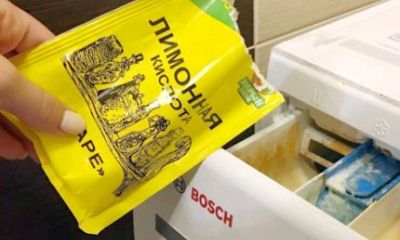 Check the drum. It should be empty.
Check the drum. It should be empty.- Close the door.
- Pour the contents of a bag with citric acid into the compartment for the detergent on the body - into the compartment intended for the main wash cycle.
- Set a washing mode that combines a long cycle (at least 1.5 hours) with a high water heating temperature (for example, "cotton", "baby clothes").
- Correct the water heating temperature to a maximum - not less than + 90 ° C.
- Start the cycle.
- After finishing the washing machine, open the door and wipe dry the seal. If there are also fragments of scale under it, they must be removed.
- If many limescale fragments have come off during operation with acid, you can additionally start a cycle in the "rinse without wash" mode in order to thoroughly rinse the machine.
- Leave the door not tightly closed for ventilation.
Part of the citric acid can be poured directly into the drum.
How to clean a washing machine with citric acid, video instruction:
How often do you delete?
If the washing machine is used quite often (several times a week), it should be descaled once a quarter.
More rare cleaning will not cope with the resulting scale. In this case, the likelihood of breakage of units increases sharply.
Frequent acid cleaning is also not desirable.... In this case, scale will be removed promptly and thoroughly, but the acid will have a destructive (and even corrosive) effect on the elements. Especially those with rubber seals.
Alternative folk remedies
Using the available tools that are in the household, you can effectively descale the machine.
How to remove with vinegar?
Table vinegar contains a high percentage of acetic acid, which can break down limestone and help remove various impurities.
For preventive cleaning, it is necessary to carry out the following work:
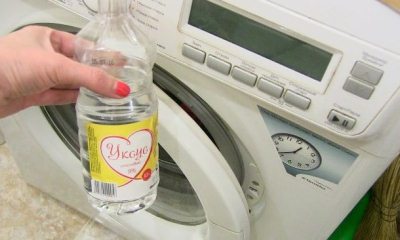 Close the drum of the washing machine, after making sure that there are no items in it.
Close the drum of the washing machine, after making sure that there are no items in it.- Pour 2 cups of ordinary vinegar into the detergent compartment.
- Set the mode "cotton" or another, which allows you to set the temperature at least + 90 ° C and provides a sufficiently long wash (at least 1.5 hours).
- Start the cycle.
- After finishing work, open the drum door for ventilation.
You can use the "presoak" setting to make sure all limescale is removed.
How to clean the washing machine from scale with vinegar, the video will tell you:
Vinegar + soda for old plaque
You can enhance the effect of cleaning by using not only vinegar alone, but also soda. To do this, you need to prepare a special solution from the following ingredients:
- ½ cup table vinegar;
- ½ glass of baking soda.
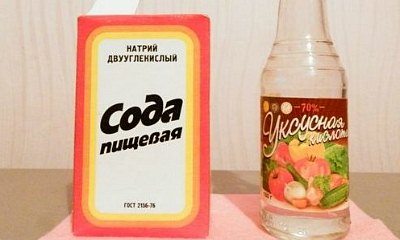 Cleaning procedure:
Cleaning procedure:
- The prepared solution is poured into the compartment for the washing powder.
- An additional 1 cup of vinegar is poured directly into the drum.
- Set the long wash cycle at the maximum temperature.
- Start the washing process.
A recipe like this will help deal with old limescale deposits.
Whiteness: the risk is not always justified
One of the home cleaning methods for washing machine heating elements is to use whiteness or other chlorine compounds.
Procedure:
- Close the door.
- Pour ½ to 1 bottle of undiluted whiteness into the powder compartment.
- Set a long wash cycle at a high temperature.
- After the end of washing, it is recommended to start the rinse mode in order to better wash away the residues of the product and the chipped scale.
After cleaning, to eliminate the chlorine odor, you can start the quick wash by adding a glass of vinegar to the powder compartment.
How to clean a washing machine "Belize", video instruction:
If all else fails, how to remove with special means?
The use of special descaling agents will solve the problem quickly and at a high level. Such drugs are specifically designed to combat scale and deposits by exposure to the acid that is present in their composition.
Dr. Beckmann
The drug is made in Germany... The product is produced in the form of a liquid. The product is intended for high-quality cleaning of the washing machine from unpleasant odors, scale, as well as preventing the development of mold.
The use of gel and powder is not difficult: they are poured (poured) into the powder compartment and the wash is started at a temperature of + 60 ° C.
A package weighing 0.25 kg costs about 300 rubles.
Consisting of:
- citric acid (up to 15%);
- glycerin (up to 5%);
- Nonionic surfactants and other components.
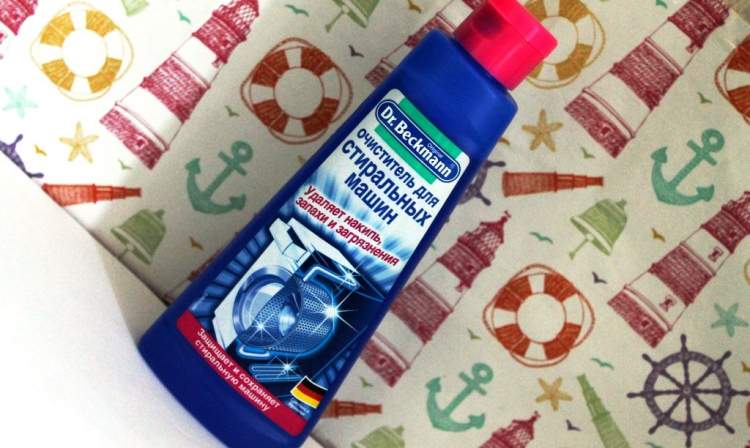
Topperr
The powder is intended for descaling dishwashers and washing machines. This product breaks down lime deposits on machine parts, but at the same time treats rubber parts with care. Package weight - 125 grams. Price - from 200 rubles.
The application is very simple:
- Pour the entire package of the product into an empty drum.
- Set the wash at + 60 ° C.
- Start the cycle.
Do not start the prewash.
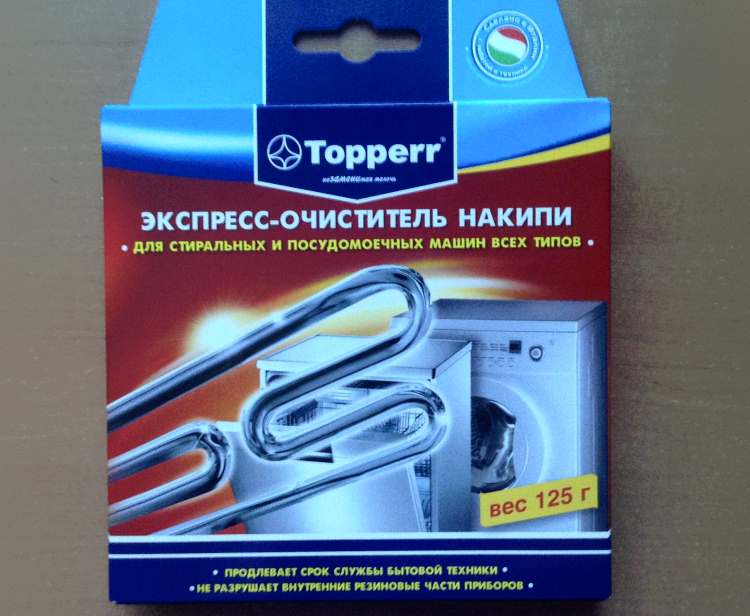
MAGIC POWER
The tool is designed to remove scale from drum, tank and heating element. Product manufacturer - Germany.
Available in two forms:
- powder (price - from 100 rubles per 0.5 kg);
- gel (price from 200 rubles for 0.5 l.).
The powder contains organic acid. The tool in powder form is used according to the following scheme:
- The empty drum is closed with a door.
- Pour the descaler into the detergent compartment.
- The washing temperature is set to + 40 ° C.
- They start the machine.
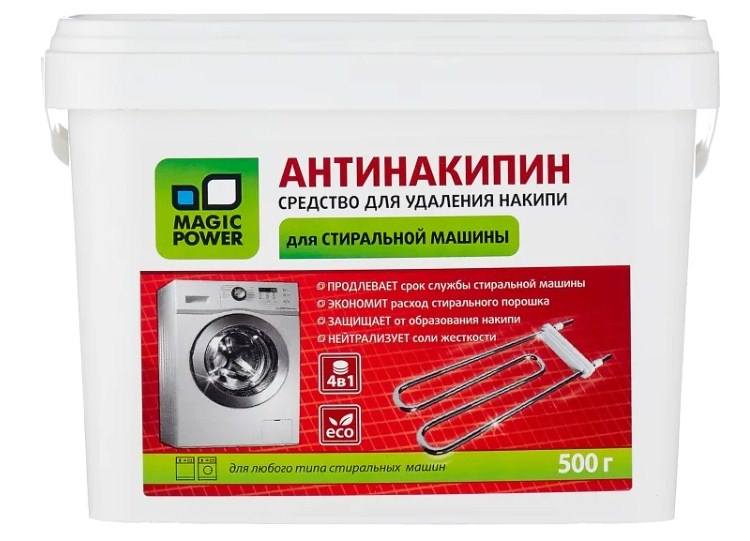
Application of the MAGIC POWER gel form:
- Pour gel into the machine (a whole bottle if there is a lot of scale, and ½ bottle if there is not enough).
- Start the washing process at a temperature of + 60 ° C.
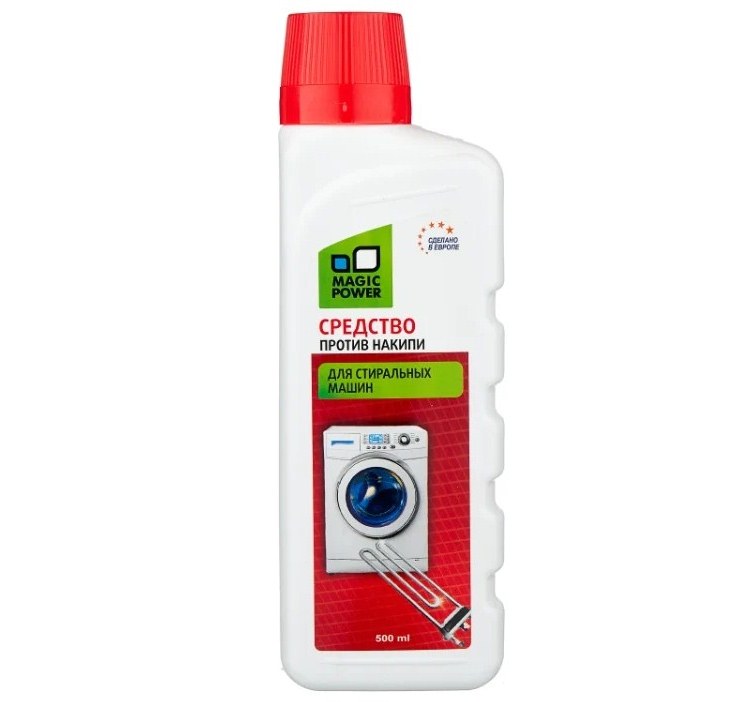
10 recommendations on the topic
Professional advice to help you cope with cleaning washing machine as efficiently as possible:
- In addition to starting washing with citric acid, you must use manual cleaning of the sealing gum, hose, filter, and also clean the container for washing powder.
- You can check whether there is scale on the heating element yourself without disassembling the washing machine. To do this, it is necessary, illuminating yourself with a flashlight, to look up through the holes of the drum. To get a better view of the heating element, the drum should be shaken slightly by hand.
- When cleaning the machine from scale, you must not use more powder for cleaning than indicated in the instructions, since you can damage the device itself - acid can corrode rubber seals and other parts.
- The maximum amount of debris and dirt gets into the washing machine after repairing the water supply system and turning off the cold water, so it is advisable not to start washing immediately after water has appeared in the system.
- You can verify that the descaling is effective by routing the drain hose into a bucket or tub.
- If a long time has elapsed between the citric acid treatments, peeled lumps of limescale can clog the filter and drain hose. In this case, additional cleaning is required.
- The more often the wash is carried out at high temperatures, the more scale will form on the heating element.
- Washing shabby clothes and those with lint contributes to the rapid formation of scale, since particles of material, separating from the products, adhere to the hot heating element and quickly become overgrown with lime deposits.
- If, while draining the water, the machine begins to make a humming sound, this may signal that the drain system is clogged with pieces of loose scale and requires manual cleaning. For this, the washing process is stopped and the situation is corrected.
- After acid cleaning, it is recommended to clean the drain filter, which is usually located at the bottom of the front side of the appliance.
How to descale various household appliances, you can find out here.
Conclusion
Limescale on the washing machine not only increases the likelihood of device breakdown, but also increases the consumption of detergents and electricity, and also increases the operating time. To maintain the working condition of the machine, descaling must be carried out regularly.

